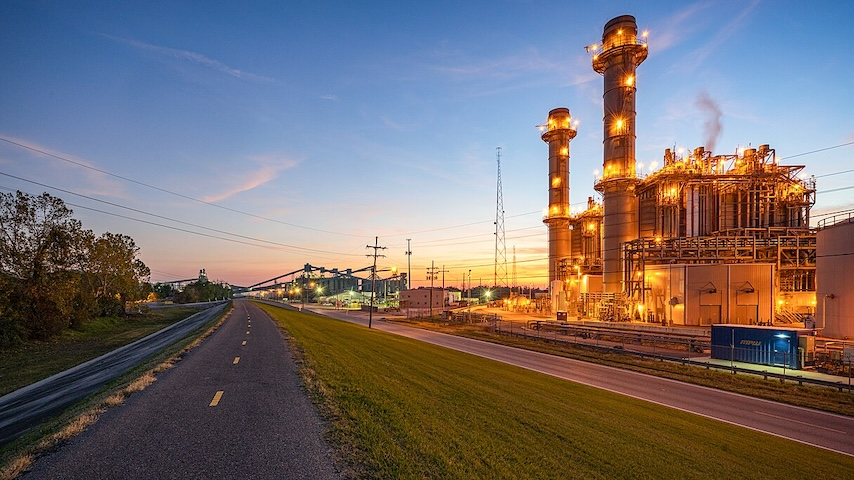Back in September, OpenAI CEO Sam Altman wrote an essay he called The Intelligence Age. He claimed that AI systems like his company’s will usher in that age, and accomplish incredible things, like, say, “fixing the climate.” (Also on the list: “the discovery of all of physics.” Exciting!)
Fast forward a few months, and rival AI powerhouse Meta has announced it will build the largest-ever AI data center in northeastern Louisiana. It will cover four million square feet, or around 92 acres — 70 football fields. And it will be powered by three (3) brand new fossil gas power plants.
“We’re not going to just be powering a facility, we’re going to be empowering a community,” said the CEO of Entergy Louisiana, Phillip May, in a press release. His company will do so by building 2,260 megawatts of new gas generation facilities, along with a number of stations and miles of transmission lines. Inspiring stuff.
Richland Parish, where this is all happening, has a median income well below Louisiana’s average — an average that is third from the bottom of all 50 states. But okay, this will mean jobs, right? Well, sort of: Meta says the $10-billion facility will create 5,000 temporary construction jobs; once running, it will only need 500 people. For Entergy’s part, as many as another 5,000 construction jobs will materialize; then it will need a grand total of 44 people to keep things humming.
Then there’s the potential health issues. Per the Environmental Protection Agency, as one might expect:
“Burning fossil fuels at power plants creates emissions of sulfur dioxide (SO2), nitrogen oxides (NOX), particulate matter (PM), carbon dioxide (CO2), mercury (Hg), and other pollutants. NOX and SO2 emissions contribute to the formation of ground-level ozone and fine PM, which can lead to respiratory and cardiovascular problems, and exposure to mercury can increase the possibility of health issues ranging from cancer to immune system damage.”
In fact, as coal power has declined, fossil gas has increased its share of poison Americans breathe in. In 2021, a study found that gas plants were deadlier than coal in 19 states. In Louisiana, 6.9 percent of people lack health insurance that might come in handy when a gas plant is installed next door; in Richland Parish, that number is 9.4 percent.
Finally, the greenhouse gases. Entergy says the new plants will someday be capable of incorporating carbon capture and sequestration tech, a thing that barely exists in the wild in spite of decades of promises. Louisiana already got 76 percent of its electricity from fossil gas in 2023, compared with only four percent from renewable energy; more than two gigawatts of new gas power isn’t going to help that mix.
And all this to build a data center that does… what exactly? As recently as two years ago, just like Altman more recently, a Meta blog touted how AI “is helping accelerate the rate of progress across many domains, including those most important to solving the climate crisis.” That blog also claimed its global operations and in particular an AI supercomputer were “supported by 100 percent renewable energy.”
This isn’t, of course specific to Meta, or OpenAI, or Louisiana. The boom in questionable-utility AI tools is causing an equivalent boom in data center construction, and many of them will be powered by fossil fuels that otherwise simply wouldn’t be burned. The idea that some AI computation will spit out a miracle cure for climate change is fueling some of this; that’s not on the menu though, not really. There’s certainly a chance that AI-related tools can help tinker around the edges, improving a climate model here or a solar cell manufacturing process there, but when you frame it that way building gigawatts of fossil fuel power to do it starts to look like the joke it really is.


